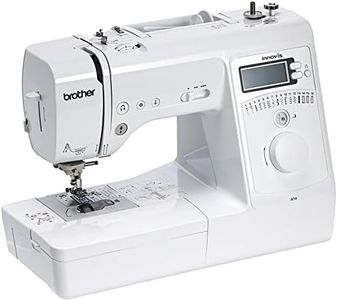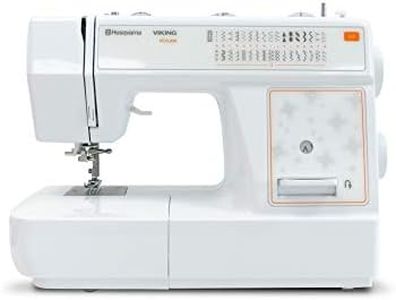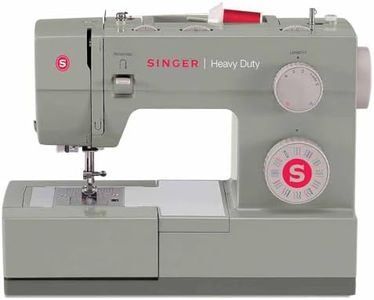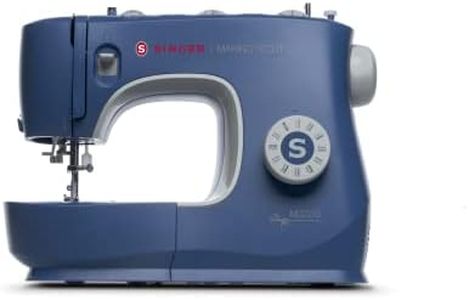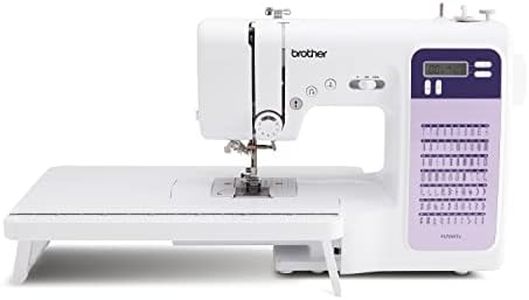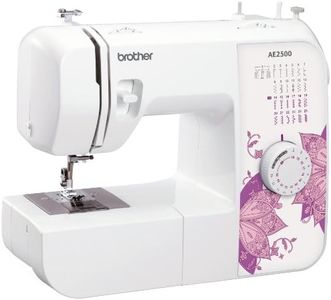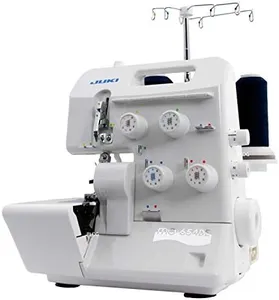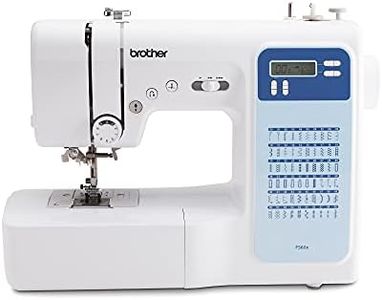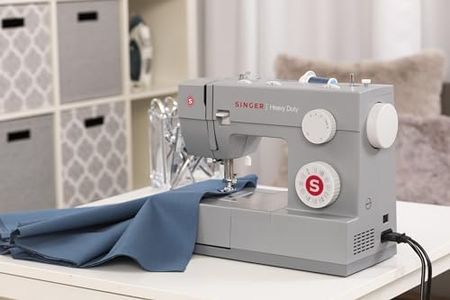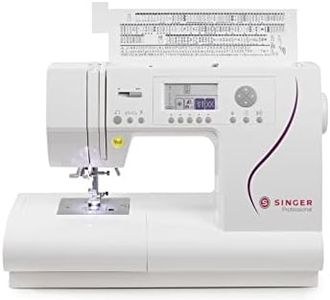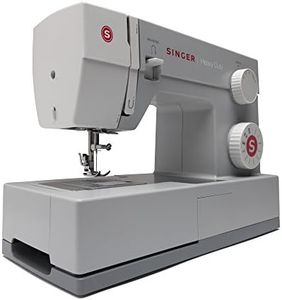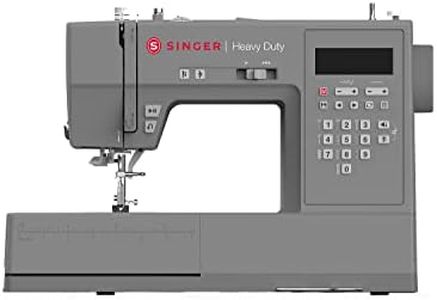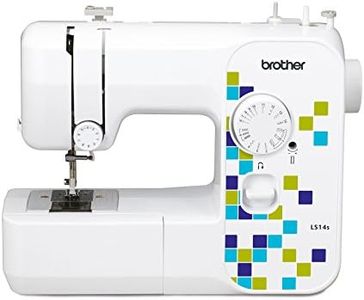We Use CookiesWe use cookies to enhance the security, performance,
functionality and for analytical and promotional activities. By continuing to browse this site you
are agreeing to our privacy policy
10 Best Sewing Machines
From leading brands and best sellers available on the web.By clicking on a link to a third party's website, log data is shared with that third party.
Buying Guide for the Best Sewing Machines
Choosing the right sewing machine can make the difference between frustration and enjoyable creative projects. Before you buy, think about what kinds of sewing you want to do, how often you plan to use your machine, and your experience level. The right machine should match your needs, skills, and ambitions, making sewing a comfortable and rewarding process. By focusing on the key specifications, you can find a sewing machine that's a perfect fit for your goals.Type (Mechanical vs. Computerized)The type of sewing machine refers to whether it operates mechanically with manual controls or uses computerized features like automatic settings and digital screens. Mechanical models are usually simple to use, with basic dials for stitch selection; they are great for beginners or those who need a straightforward setup for simple tasks. Computerized machines offer programmed stitches, one-step buttonholes, and often touchscreens, making them well-suited for more advanced or diverse sewing. If you want convenience and extra features, go for computerized; if you prefer simplicity, a mechanical machine is the better option.
Number and Variety of StitchesThis specification refers to how many different stitches the machine can perform, including straight, zigzag, decorative, and specialty stitches. Machines with a low number of stitches (typically under 20) are adequate for basic hemming, mending, and simple projects, while those with more stitches offer greater creative flexibility for decorative sewing, quilting, or crafting. Choose based on what types of projects you plan to do—if you only need the basics, a few stiches will suffice, but if you want to try a variety, look for machines with more options.
Automatic FeaturesAutomatic features might include threaders, thread cutters, tension adjustment, and one-step buttonholes. These make sewing faster and reduce manual tasks. If you like convenience and want to save time or avoid frustration, especially as a beginner or if you have dexterity concerns, automatic features can be very helpful. Think about which tasks slow you down or feel complicated, and prioritize machines that automate those steps.
Sewing Speed (Stitches Per Minute)Sewing speed measures how fast the machine can sew, usually given in stitches per minute (SPM). Lower speeds (under 700 SPM) suit beginners and hobbyists who want control and safety, while higher speeds (above 800 SPM) work better for experienced sewers who want to finish projects quickly. If you're new to sewing or working on small projects, a lower speed may be best, but for large projects or frequent use, a higher speed can boost efficiency.
Presser Foot AdjustabilityPresser foot adjustability means you can change the pressure of the foot that holds fabric in place as you sew. This matters when working with fabrics of different thicknesses or textures. If you plan on mostly standard fabrics, this may not be critical, but if you want to sew heavy materials like denim or very thin ones like silk, look for machines offering adjustable presser foot pressure for better results and fewer fabric issues.
Built-in Needle ThreaderA built-in needle threader is a small feature that can save time and reduce strain, especially if you have difficulty seeing fine details or steadying your hands. This makes threading the needle much quicker and less frustrating. If needle threading is tricky for you or you value quick setups, choose a machine with this feature.
Free Arm CapabilityA free arm is a removable section on the sewing area, allowing you to easily sew cylindrical items like sleeves, cuffs, or pant legs. If you ever want to alter clothing or sew small, round projects, a free arm is very helpful. For flat sewing only, it's less important, but having a free arm adds versatility without complicating use.
Weight and PortabilityThe weight of a sewing machine affects how easy it is to move or store. Lighter, more portable machines are great if you’ll take your machine to classes or sewing groups, or if you need to put it away between uses. Heavier machines tend to be more stable and durable, suiting those who keep their machine in the same spot for frequent, heavy-duty sewing. Consider how and where you’ll use it to decide which is best for you.
